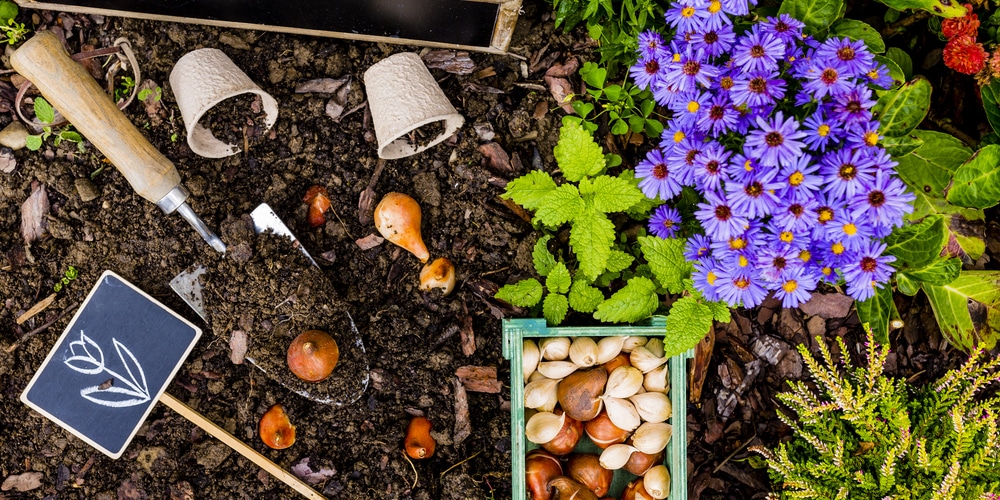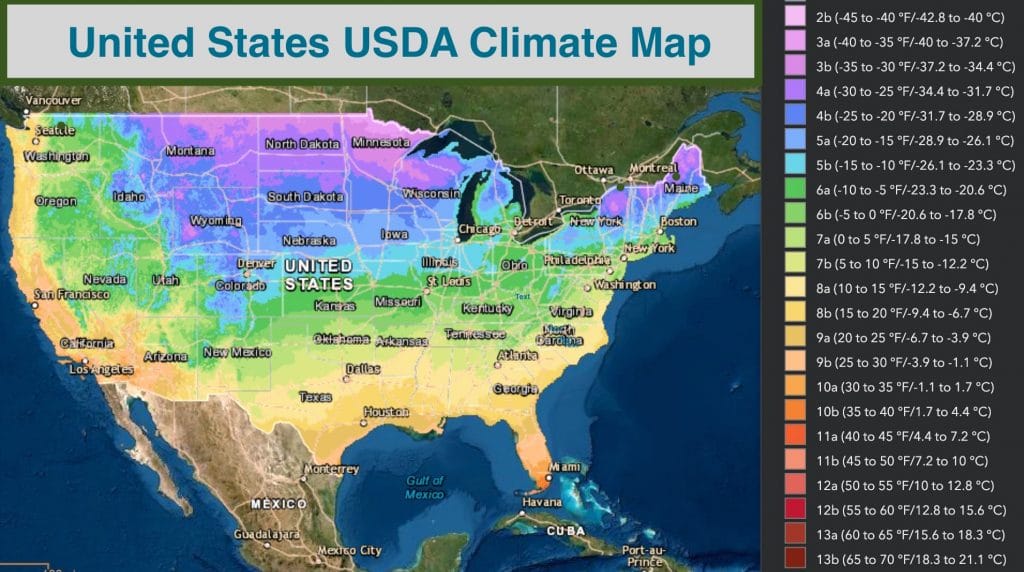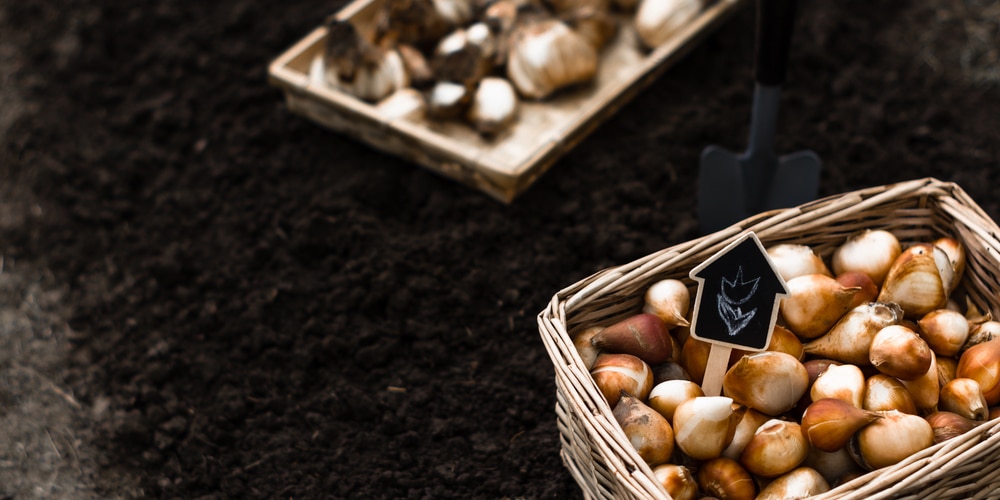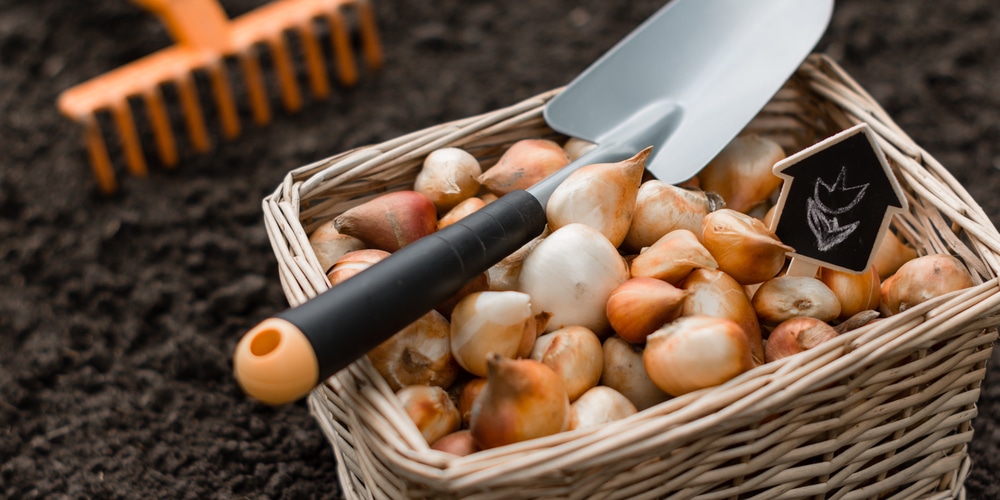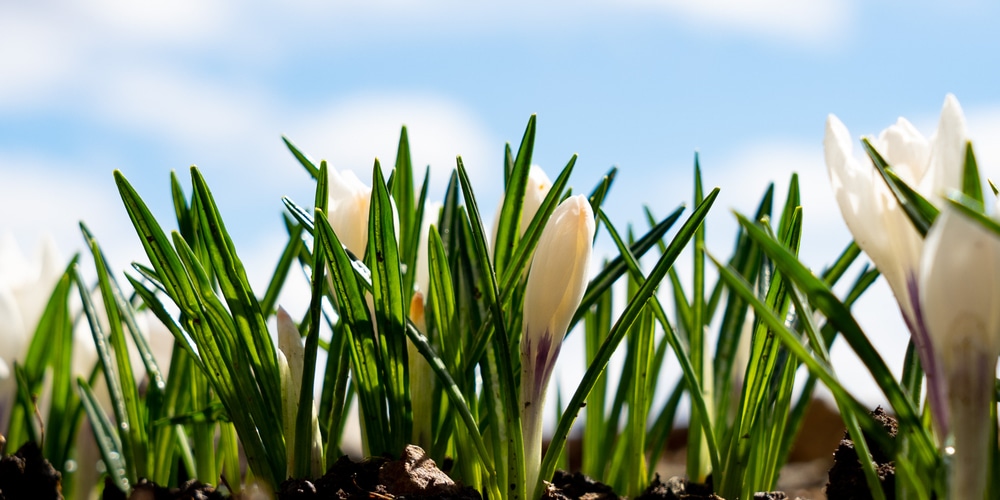Bulbs are the most fascinating plants you’ll encounter in gardening. Can you imagine a small bulb just 4 inches in circumference producing stems and bearing beautiful and colorful flowers in summer? And then when fall comes, the flower may wither, and the bulb may go dormant, but expect that it will sprout new stems again in spring.
Bulbs are indeed a great addition to your garden. To name a few, tulips, irises, hyacinths, daffodils, lilies, caladiums, and dahlias will add more color and beauty to your property.
However, growing bulbs is a bit more complicated if you live in the southern part of the USA. Gardeners in USDA zone 9 even say that tulips are a one-season show, which is very sad. But still, planting bulbs is not impossible, and bulbs for zone 9 exist.
Types of bulbs
Plants also propagate through bulbs. Think of the bulb as the plant’s seed, which you have to bury in the ground to sprout new stems. The bulb also carries the genetic starting material for the plant. However, a bulb is the plant’s entire life cycle and acts as a winter food storage system. All bulbs are perennial. They will go dormant in the winter but will sprout new stems again in the spring. Bulbs can be grouped into two: spring bulbs and summer bulbs.
Spring bulbs
Spring bulbs are hardy bulbs, so expect that they will require several weeks of cold temperatures. This will help them blossom to their full potential when spring comes. These bulbs are best planted in the fall when the ground is getting cooler. They favor long chill hours in winter, which is very beneficial for their growth. Your favorite tulips, irises, hyacinths, and daffodils are all spring bulbs.
Summer bulbs
Dahlias, lilies, caladiums, elephant ears, begonias, gladiolas, and oxalis are all summer bulbs. These bulbs are “tender,” which means they don’t grow well in cold climates. They are best planted in spring when the soil gets warmer. When summer comes, the plant will bloom with beautiful flowers. However, there are summer bulbs that don’t bloom until fall, like dahlias.
Can you grow bulbs in USDA hardiness zone 9?
States in the southern part of the US are categorized under USDA hardiness zone 9. These regions have a subtropical climate where winter is mild, and summer is hot and much longer. The temperature in zone 9 can only go as low as 20 degrees F.
Zone 9 only receives up to 500 chill hours in the winter, which is approximately three weeks. Sunlight is not a problem in zone 9 because it gets enough sunlight to provide for the plants. Most of the time, the problem is the chill hours that are needed by perennials, like bulbs, for the plant to grow or flower again in spring.
Spring bulbs
It is not impossible to have tulips in your garden if you live in Zone 9. However, spring bulbs are a bit difficult to grow in the south. Although they are perennials, once you plant them in zone 9, they become annuals only enjoyed for one season.
Spring bulbs require at least 12 weeks of chill hours to break dormancy, “turns on” flower formation, and initiate root growth. Sadly, zone 9 cannot provide this chilling requirement. In order to grow spring bulbs in zone 9, the bulbs must be pre-chilled in your refrigerator at a temperature of below 45 degrees F for at least 12 weeks before you plant them in your garden.
The best planting time for spring bulbs in the south is from November to December when the soil is starting to get cooler, which is a little more lenient than zone 8. The bulb will bloom 4 to 6 weeks after planting. After this, it won’t be easy to get the bulb to bloom again the following spring.
Summer bulbs
If you want bulbs that grow well in USDA hardiness zone 9 and come back to you again in the next growing season, go for summer bulbs. Summer bulbs are for those who live in the south because they thrive in warm climates.
They don’t need to be pre-chilled because they grow well even without chill hours. You also don’t need to dig them in the winter because the winter in the south won’t damage them. The only thing you need to give them is well-drained soil. The cold and wet winter that is typical in zone 9 can cause bulb rot. The best time to plant summer bulbs in zone 9 is mid-spring, from late March to May.
What bulbs grow well in USDA hardiness zone 9?
Spring bulbs don’t grow well in the USDA hardiness zone 9. If you want bulbs in your garden, it is better to go for summer bulbs. Like the spring bulbs, these bulbs give beautiful and colorful flowers. You don’t need to worry about chill hours or hot weather with summer bulbs because they thrive in warm regions. Below are some summer bulbs for zone 9:
- Begonias
- Cannas
- Elephant ears
- Caladium
- Nerines
- Liatris
- Oxalis
- Pineapple lilies
- Tigridia
- Tuberose
Can bulbs survive in USDA Hardiness Zone 9?: Conclusion
Spring bulbs do survive in USDA hardiness zone 9, but they don’t grow well. Zone 9 has a shorter and milder winter which is not enough for spring bulbs to flower in the spring. Zone 9 can be tough for many flowers, Lilacs can’t really survive in zone 9 for instance.
They have to be pre-chilled just for them to produce flowers, and they only bloom beautiful flowers once. Summer bulbs can survive and grow well in USDA hardiness zone 9. They may not be everyone’s favorite, but they can also give you beautiful flowers in the summer.
Related Article: How Long do Bulbs Last Unplanted?
